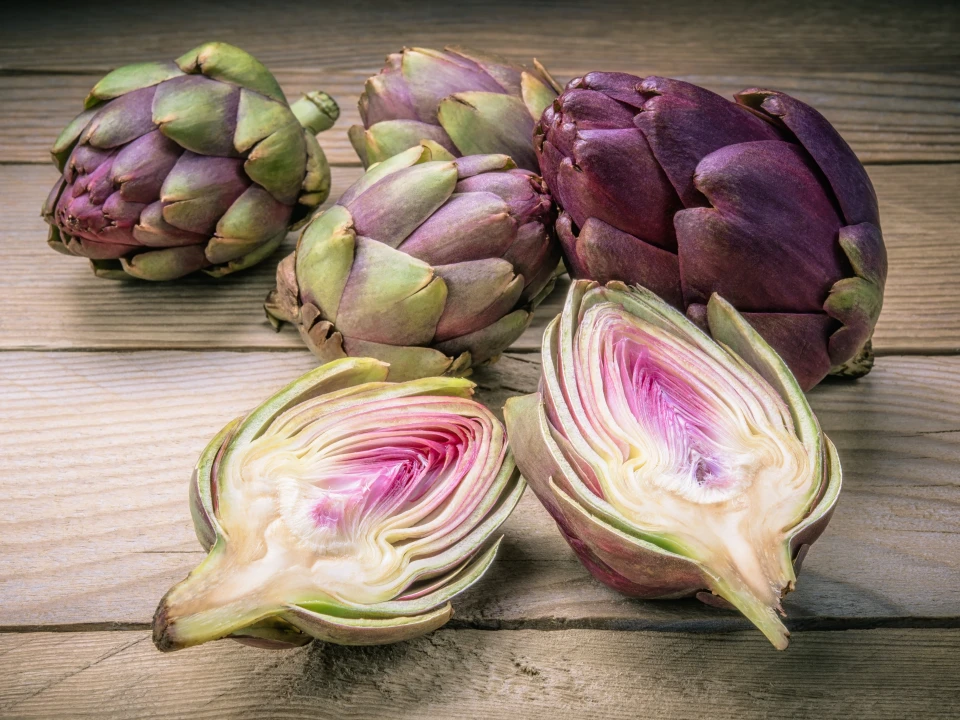The artichoke (Cynara scolimus) is a plant known since the time of the Egyptians and is widespread in the Mediterranean region. Legend has it that its name, Cynara, comes from a beautiful girl whom Zeus fell in love with. Zeus went to visit his brother Poseidon and, upon seeing the girl, immediately fell in love with her. After seducing her, he turned her into a goddess to take her to Olympus.
However, Cynara soon felt lonely and missed her family, so she secretly returned to Earth to meet her mother and family. Zeus, furious, threw her from Mount Olympus and transformed her into a thorny plant! The term "artichoke," however, derives from "al-karshuf," as the Arabs called it, who had been cultivating it since the 4th century BC.
The ancient Romans used the artichoke both in cooking and medicine, as noted by the Latin writer and agronomist Lucius Junius Moderatus Columella, who praised the properties of the "cynara." Since then, and likely even earlier by the Etruscans, the artichoke has been cultivated in the Agro Romano, now known as the Agro Pontino, and other Lazio farmlands. The Romanesco artichoke, the first Italian product to receive European protection with the IGP (Protected Geographical Indication) label, is grown here.
Also known as "cimarolo" or "mammola," the Romanesco artichoke is considered the king of the garden. Its typical cultivation area is the Lazio coastline, particularly in Ladispoli and Cerveteri, about 40 km from Rome. The soil quality is crucial for growing this variety. The land here is rich in sesquioxide iron, and this iron is also present in the artichoke. The production guidelines state that the Romanesco IGP artichoke must be grown without the use of plant growth regulators to maintain its authenticity. This product should be consumed soon after purchase, typically between March and April, as it does not store well in the fridge. To fully enjoy its taste and quality, it should be eaten fresh.
It stands out from other varieties due to its larger size, with its heads being purple and containing sodium, potassium, phosphorus, calcium, and vitamins C and K. The ideal harvest period is from early March to the end of April. In Roman and Lazio cuisine, there are countless recipes using artichokes, with traditional preparations such as "alla Giudia" and "alla Romana." They are also used in many first courses, second courses, and side dishes, like broths, fried, and stuffed. The famous "carciofi alla giudia," a dish from the Roman Jewish cuisine, has been celebrated since the 1500s. Historical documents show that the Jewish community in Rome were frequent consumers of artichokes prepared "alla giudia," for which they became well-known. To prepare carciofi alla giudia, Romanesco IGP artichokes are required, and the "capatura" (trimming) is a critical step in the process, as shown in the typical "rose cut."
Since ancient times, artichokes have been attributed with therapeutic properties, particularly for liver diseases. They were also thought to have aphrodisiac qualities, though this was merely a superstition. Modern scientific studies have confirmed their pharmacological benefits. Rich in minerals, vitamins, and fiber, they should be a regular part of our diet. Those on a weight-loss diet should never exclude them, as they help regulate appetite, stimulate diuresis, and assist in managing weight and cellulite. Artichokes also have therapeutic virtues for those with cholesterol, diabetes, hypertension, and liver problems, thanks to the presence of cynarin and choloretin. They help combat kidney stones and have detoxifying and tonic effects. The diuretic effect of artichokes also helps reduce the toxic effects of alcohol by lowering its concentration in the blood, while also providing liver protection and general detoxification.
Various festivals and fairs dedicated to the artichoke are held in Lazio, particularly during the spring harvest period. Some of the most famous are the Ladispoli Artichoke Festival, the Sezze Artichoke Festival, and the Carciofolata Veliterna in Velletri.




